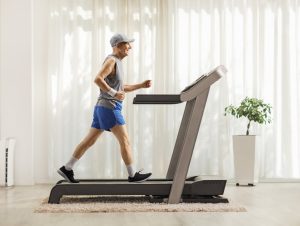
But there are reports that the opposite is true. The pandemic actually increased activity across populations.
Research suggests that people 65 and older have been more active. The activity, however, is changing. People are doing more walking, cycling, snowshoeing, etc., and less lifting. In other words, the time exercising has increased while intensity has decreased.
If you’re spending more time on your feet, good for you. Keep at it. And do your best to ignore the one deterrent that comes along with more time upright: swelling.
It’s true that activity is one of the best ways to promote better circulation. When blood is pumping at an increased level, veins relax, and blood moves efficiently. But spending too much time upright can cause fluids to pool in your lowest extremities.
Thankfully, it can be easily fixed. Swollen feet can be remedied by simply sitting back and putting your feet up. As long as they are higher than your waist, the fluid will disperse and be distributed throughout the body. About 15-20 minutes may be all it takes.
So, sit back and relax. You’ve earned it!
Putting your feet up can take care of foot swelling when it happens, but there are other things you can do to encourage better blood flow. Eating a diet rich in fruits and vegetables can improve blood flow.
Some foods, like beetroot juice, leafy greens, and even dark chocolate, may provide a little extra blood flow boost. These items can boost nitric oxide production, so veins relax and allow more blood through.
Try drinking some beetroot juice before your next walk (100 ml is all you need). If needed, when you come home, put those feet up and enjoy a couple of squares of dark chocolate!